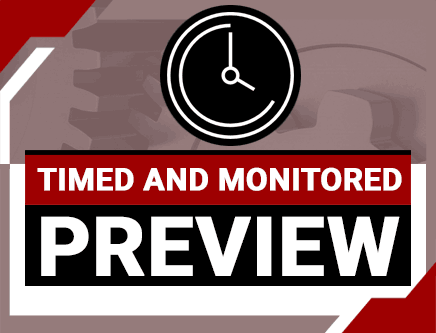Circuit Protection Devices (Ohio Timed & Monitored)
Credit: 2 PDH
Subject Matter Expert: A. Bhatia, Mechanical Engineer
In Circuit Protection Devices , you'll learn ...
- Why circuit protection devices are needed
- Fuse types, ratings, and selection criteria
- Circuit breaker types, ratings and selection criteria
- Selective tripping and why it is used
Overview

To meet the Ohio Board's intent that online courses be "paced" by the provider, a timer will be used to record your study time. You will be unable to access the quiz until the required study time of 100 minutes has been met.
Credit: 2 PDH
Length: 41 pages
Too much current flowing through an electric circuit can damage the circuit and create a safety hazard. How much current is "too much current?" That depends on the circuit and its components. For some circuits, 1 ampere would be too much current, while for other circuits 1 ampere would be perfectly acceptable. Circuit protection devices protect electrical equipment by rapidly disconnecting power to components in the event of abnormal overload conditions resulting from excessive voltages, ground faults, and accidental shorting of a circuit.
Two types of circuit protection devices are common; fuses and circuit breakers both operate by opening and interrupting current to the circuit. A fuse or circuit breaker is designed to create an open circuit if too much current flows through it. You can think of it as a switch that automatically turns itself off if the current through it exceeds a certain level. When a fuse is "blown" by having too much current pass through it, the fuse is ruined and must be replaced. On the other hand, when a circuit breaker is "tripped" by excessive current, the circuit breaker can be reset and used again, instead of being discarded. The choice of which to use depends on the specific application, circuit type, electrical specifications, space available, environmental constraints, and customer preference.
A proper circuit protection strategy reduces long-term maintenance needs and other costs, and minimizes system downtime. This 2-hour course provides an overview of circuit protection devices.
Specific Knowledge or Skill Obtained
This course teaches the following specific knowledge and skills:
- The reasons why circuit protection is needed
- Definitions of a "direct short", "excessive current condition" and "excessive heat condition"
- How circuit protection devices are connected in a circuit
- Circuit protection devices - types and characteristics
- The three time delay ratings of circuit breakers
- Selective tripping and why it is used
- The factors used in selecting circuit breakers
- The items to check when replacing/maintaining fuses and circuit breakers
Certificate of Completion
You will be able to immediately print a certificate of completion after passing a multiple-choice quiz consisting of 15 questions. PDH credits are not awarded until the course is completed and quiz is passed.
| This course is applicable to professional engineers in: | ||
| Alabama (P.E.) | Alaska (P.E.) | Arkansas (P.E.) |
| Delaware (P.E.) | District of Columbia (P.E.) | Florida (P.E. Area of Practice) |
| Georgia (P.E.) | Idaho (P.E.) | Illinois (P.E.) |
| Illinois (S.E.) | Indiana (P.E.) | Iowa (P.E.) |
| Kansas (P.E.) | Kentucky (P.E.) | Louisiana (P.E.) |
| Maine (P.E.) | Maryland (P.E.) | Michigan (P.E.) |
| Minnesota (P.E.) | Mississippi (P.E.) | Missouri (P.E.) |
| Montana (P.E.) | Nebraska (P.E.) | Nevada (P.E.) |
| New Hampshire (P.E.) | New Jersey (P.E.) | New Mexico (P.E.) |
| New York (P.E.) | North Carolina (P.E.) | North Dakota (P.E.) |
| Ohio (P.E. Timed & Monitored) | Oklahoma (P.E.) | Oregon (P.E.) |
| Pennsylvania (P.E.) | South Carolina (P.E.) | South Dakota (P.E.) |
| Tennessee (P.E.) | Texas (P.E.) | Utah (P.E.) |
| Vermont (P.E.) | Virginia (P.E.) | West Virginia (P.E.) |
| Wisconsin (P.E.) | Wyoming (P.E.) | |




